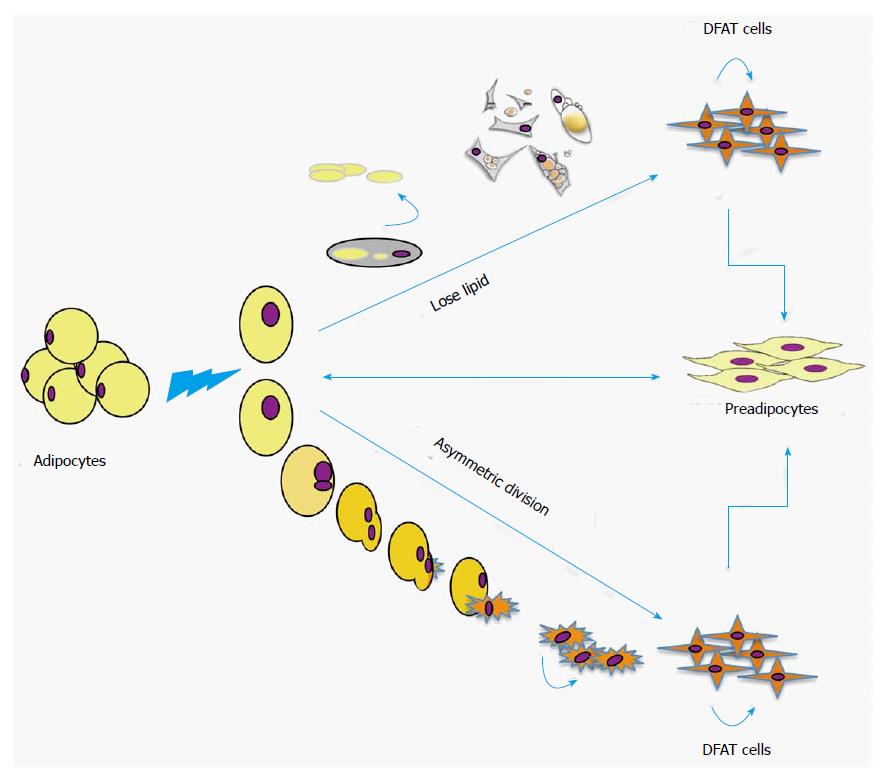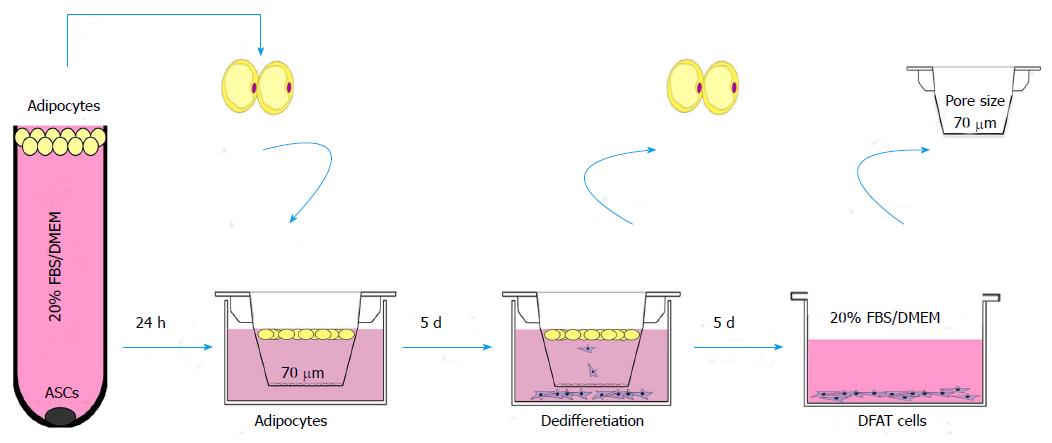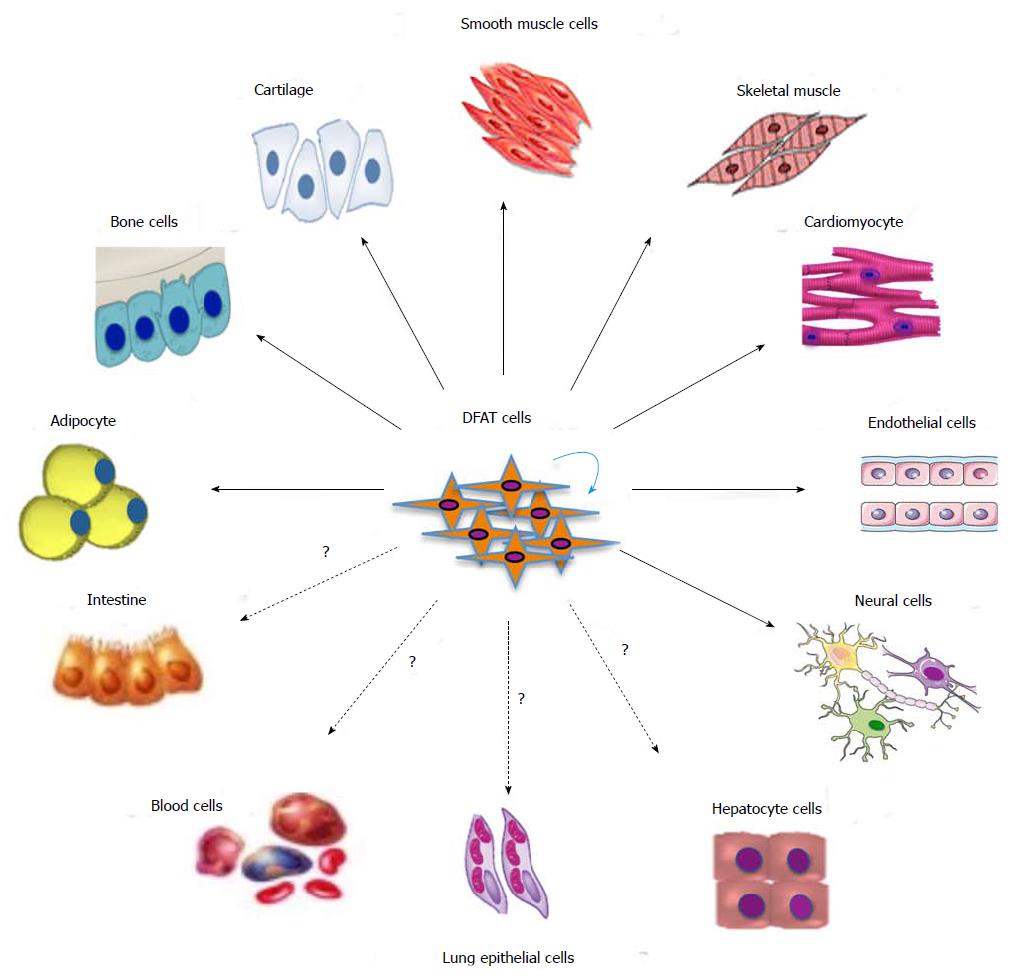Copyright
©The Author(s) 2015.
World J Stem Cells. Nov 26, 2015; 7(10): 1202-1214
Published online Nov 26, 2015. doi: 10.4252/wjsc.v7.i10.1202
Published online Nov 26, 2015. doi: 10.4252/wjsc.v7.i10.1202
Figure 1 Dedifferentiation of adipocytes.
Mature adipocytes lose their lipid content and acquire a fibroblast-like shape. Mature adipocytes also divide asymmetrically into one lipid-filled adipocyte and small daughter cells without lipid. The new lipid-free cells are referred to as DFAT cells. DFAT: Dedifferentiated fat.
Figure 2 Schematic drawing of dedifferentiated fat cell preparation using preincubation and filters.
Isolated adipocytes are incubated for 24 h in culture medium, before transfer to a new dish with filter, where the adipocytes remain for five days before the filter is removed. DFAT cells are allowed to sink through the filter to the bottom of the dish. The adipocytes and filter insert are then removed, and the new DFAT cells are cultured by regular methods. ASCs: Adipose-derived stem cells; DFAT: Dedifferentiated fat.
Figure 3 Schematic drawing of differentiation in dedifferentiated fat cells.
The DFAT cells are able to differentiate into multiple lineages, including adipogenic, osteogenic, chondrogenic, myogenic, angiogenic and neourogenic lineages. Potential for differentiation into hepatocytes, lung cells, intestine cells and hematopoietic cells has not been reported. DFAT: Dedifferentiated fat.
- Citation: Jumabay M, Boström KI. Dedifferentiated fat cells: A cell source for regenerative medicine. World J Stem Cells 2015; 7(10): 1202-1214
- URL: https://www.wjgnet.com/1948-0210/full/v7/i10/1202.htm
- DOI: https://dx.doi.org/10.4252/wjsc.v7.i10.1202











